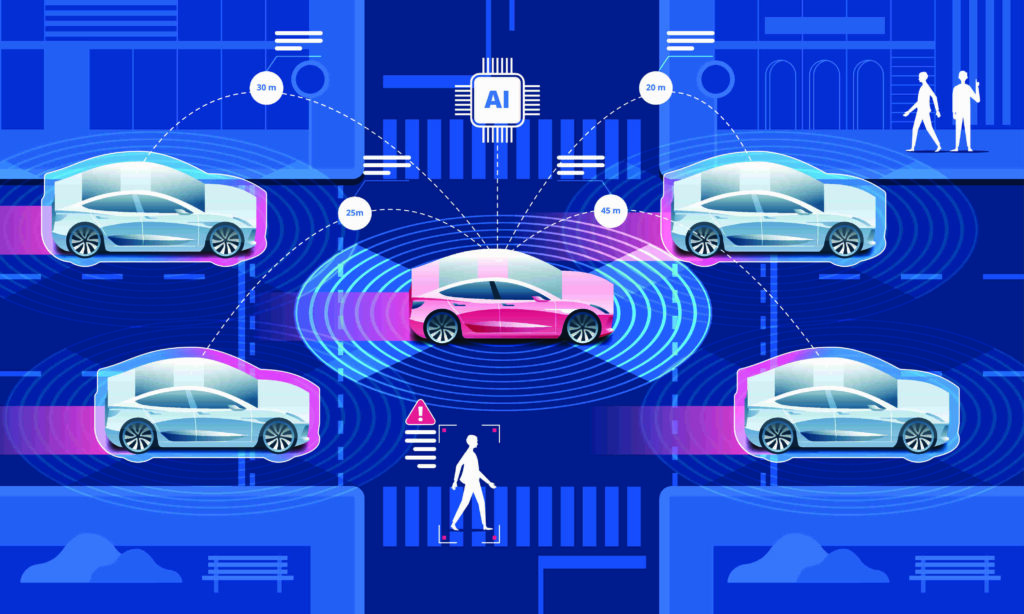The automotive industry has reached a critical turning point with the adoption of Advanced Driver-Assistance Systems (ADAS) in an era characterized by technological advancements and a growing commitment to improving road safety. Globally, ADAS, a group of advanced technologies aimed at improving driver comfort and safety, has been gradually finding its way into automobiles. This essay will delve into the intriguing realm of advanced driver assistance systems (ADAS), highlight their diverse range of applications, and look at how they have revolutionized driving practices and traffic safety.
The Introduction of ADAS
ADAS is made up of a wide range of features and sensors that are intended to help drivers in different ways. These consist of parking assistance, automatic emergency braking, adaptive cruise control, lane-keeping assistance, blind-spot monitoring, and, more recently, cutting-edge technologies like driver monitoring systems and facial recognition. Modern technologies like cameras, radar, LiDAR, and artificial intelligence are frequently the foundation of these systems; they all work together to make driving safer and more effective.

Improving Traffic Safety
The reduction of accidents on the road is one of the main goals of ADAS, and the outcomes are very remarkable. According to studies, ADAS technologies have greatly reduced the number of accidents and their severity. Automated emergency braking and lane-keeping assist systems are two examples of features that have been shown to be crucial in reducing the risk of rear-end collisions.
Modifying One’s Driving Behavior
In addition to increasing road safety, the implementation of ADAS has begun to change driving practices all over Australia. The following are some noteworthy ways that ADAS is changing how we drive:
- Enhanced Belief in Automation: Drivers’ confidence in ADAS systems is increasing as they realize its benefits. This confidence encourages drivers to accept automation, which results in a less stressful and more leisurely driving experience.
- Decreased Exhaustion of Drivers: Long trips become easier to handle thanks to features like adaptive cruise control, which free drivers from having to constantly change their speed. Less fatigue means safer driving conditions.
- Enhanced Flow of Traffic: Adaptive traffic management and cooperative adaptive cruise control are two examples of ADAS technologies that have the potential to improve traffic flow and lessen congestion, which would shorten daily commutes and make them more comfortable.
- Improved Availability: Driving has become more accessible to a greater number of people, including those with disabilities, thanks to ADAS features. This inclusiveness is a big step in the direction of more fair transportation policies.
- Modifications in Behavior: Driving behavior is becoming more conscientious as a result of drivers realizing that their cars can help them avoid accidents and handle traffic more skillfully, which increases road safety.
- Combining Emerging Technologies with Integration: The most recent developments offer an extra degree of individualized safety, such as driver monitoring systems and facial recognition. Road safety is further improved by these technologies, which can identify indicators of driver fatigue or distraction and promptly issue alerts.
Difficulties and Opportunities for the Future
Even though ADAS has come a long way, there are still difficulties. It is essential to make sure drivers are aware of the limitations of these systems and refrain from over-relying on them. Furthermore, because these systems gather and transfer sensitive data, there are worries regarding cybersecurity and data privacy. To solve these problems, more research, development, and instruction are required.
There is so much promise for ADAS in the future. We may anticipate even more sophisticated and integrated systems that improve road safety as technology develops. Furthermore, with the growing popularity of electric and driverless cars, ADAS might be essential to the shift to a more efficient and sustainable transportation system.
Integration with Electric and Autonomous Vehicles: As electric and autonomous vehicles become more widely used, ADAS is anticipated to be essential to raising the security and effectiveness of these cutting-edge forms of transportation. It is predicted that the combination of ADAS and autonomous driving technology will completely transform the driving experience.

In summary
ADAS is a shining example of innovation in the quickly changing transportation landscape, providing a route toward safer roads and better driving experiences. Advanced driver assistance systems have decreased accidents in Australia, but they have also caused a change in driving behaviors that has increased accessibility, safety, and confidence among drivers.
To make sure that these developments benefit society as a whole, legislators and the automotive sector must collaborate as ADAS technologies continue to advance. We can anticipate a time when everyone will drive more joyfully and stress-free and where road safety will greatly improve thanks to innovation, education, and responsible deployment.

